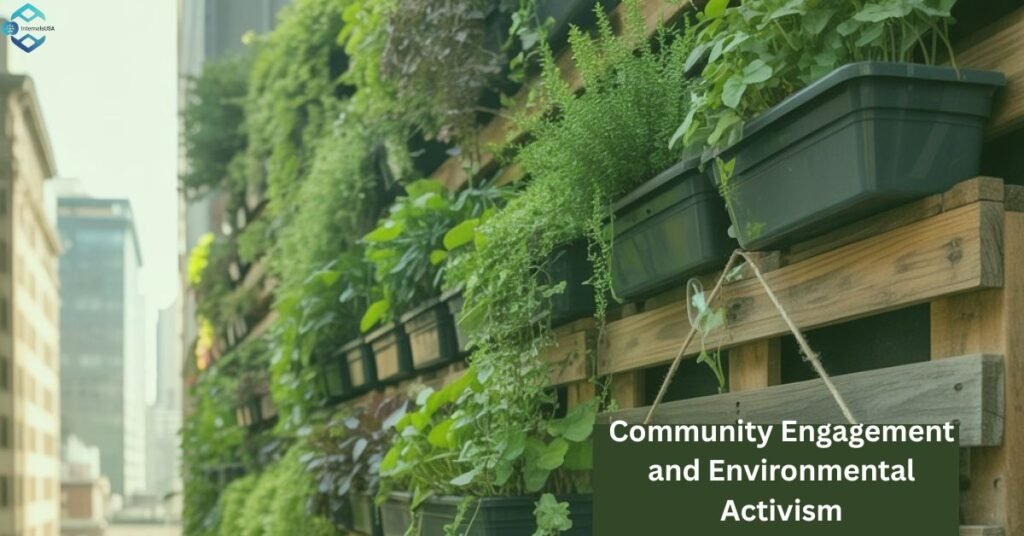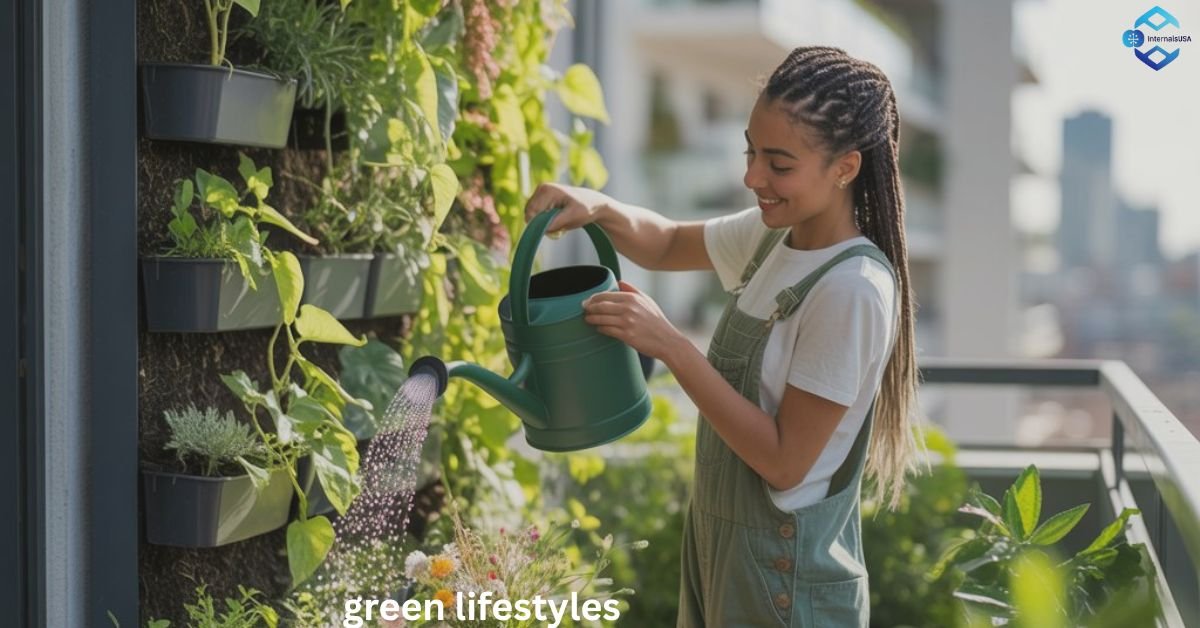Green lifestyles are more than eco-trends they represent a revolutionary shift toward environmental responsibility, sustainability, and holistic well-being. This comprehensive guide explores what it means to live a green lifestyle, from conscious consumption and renewable energy to sustainable fashion, eco-friendly homes, and zero-waste practices.
Learn how to reduce your carbon footprint, conserve natural resources, and make planet-positive choices that enhance personal health and community wellness. Embrace recycling, plant-based eating, mindful transportation, and ethical shopping habits as part of your sustainable journey. With practical strategies and insightful tips, this article will empower you to make greener decisions in your daily life. Whether you’re a beginner or a seasoned environmental advocate, this guide will help you adopt an impactful green lifestyle for yourself and for generations to come.
Introduction
The Earth is under tremendous pressure from climate change and deforestation to pollution and overconsumption. Amid these mounting environmental crises, green lifestyles have emerged as an ethical and practical response. They empower individuals to live harmoniously with nature while minimizing ecological footprints.
Green lifestyles are not merely about environmentalism; they symbolize a conscious awakening a profound commitment to sustainability, mindfulness, and eco-intelligence. They challenge the throwaway culture, replacing it with a regenerative mindset that values simplicity, balance, and conservation. Whether it’s reducing plastic, conserving energy, supporting ethical brands, or switching to clean transportation, every action in a green lifestyle helps to build a resilient and livable planet. Let’s explore how to adopt this revolutionary way of living in all aspects of life.
What is a Green Lifestyle?

A green lifestyle encompasses a wide spectrum of daily choices rooted in sustainability, environmental awareness, and social responsibility. It encourages:
- Minimal use of non-renewable resources
- Conscious consumerism and reduced materialism
- Living in harmony with ecosystems and biodiversity
Green living promotes the belief that humans are stewards of the Earth, and our choices have real consequences. It challenges the unsustainable norms of industrialization and consumer culture with a more thoughtful, circular approach to life.
Core Green Lifestyle Pillars:
- Low carbon footprint
- Waste reduction
- Ethical consumption
- Water and energy conservation
- Eco-conscious education
Energy Efficiency and Renewable Power Sources
At the heart of green lifestyles lies the switch from conventional energy to renewable energy sources like solar, wind, and hydroelectric power. Traditional energy systems burn fossil fuels that release harmful emissions, accelerating climate change.
Benefits of Renewable Energy:
- Lowers greenhouse gas emissions
- Reduces air and water pollution
- Creates sustainable employment
- Promotes energy independence
Sustainable Practices at Home:
- Install solar panels for electricity and water heating
- Use energy-efficient appliances (look for Energy Star certified products)
- Switch to LED lighting
- Insulate your home to reduce heating and cooling needs
These adjustments not only reduce energy bills but also significantly reduce your home’s carbon footprint.
Sustainable Transportation: Moving Greener

Transportation contributes nearly 30% of global carbon emissions, making it a critical area for greening. A green lifestyle encourages alternatives that prioritize efficiency, low emissions, and health benefits.
Sustainable Transit Options:
- Walking and cycling
- Public transportation
- Electric vehicles (EVs)
- Carpooling and ride-sharing
For short distances, opting for bicycles or walking not only reduces emissions but also enhances cardiovascular health, lowers stress, and promotes community interaction.
Advanced Green Options:
- Electric scooters or e-bikes
- Investing in hybrid or EVs with zero tailpipe emissions
- Advocating for greener public transport infrastructure
Waste Reduction and the Zero-Waste Movement
One of the most transformative components of green lifestyles is adopting a zero-waste philosophy. This means aiming to eliminate waste by redesigning our consumption cycles.
Key Principles:
- Refuse: Say no to items that generate unnecessary waste
- Reduce: Minimize consumption of goods
- Reuse: Repurpose and upcycle items
- Recycle: Separate waste responsibly
- Rot: Compost organic matter
Practical Actions:
- Carry reusable water bottles, utensils, and shopping bags
- Choose products with minimal or biodegradable packaging
- Repair rather than discard electronics and clothes
- Set up compost bins for kitchen scraps
By applying circular economy principles, green lifestyles prioritize resourcefulness over disposability.
Eco-Friendly Food Choices and Plant-Based Eating
Our diet plays a crucial role in environmental sustainability. Green lifestyles promote organic, local, and plant-based eating, which reduces land degradation, pollution, and resource depletion.
Environmental Impact of Food:
- Livestock farming accounts for a significant share of methane emissions
- Industrial agriculture uses harmful pesticides and fertilizers
- Long food transport chains raise carbon emissions
Green Food Habits:
- Support farmers’ markets and local food cooperatives
- Grow your own fruits, herbs, and vegetables
- Reduce meat and dairy intake in favor of plant-based options
- Compost food scraps and reduce food waste
Transitioning to a more plant-forward diet not only benefits the environment but also improves heart health, digestion, and longevity.
Conscious Consumerism and Sustainable Fashion
Modern consumerism encourages buying more than we need. Fast fashion, in particular, is exploitative and environmentally destructive. Green lifestyles promote ethical fashion and conscious shopping.
Green Shopping Practices:
- Buy fewer, quality-made clothing items
- Choose brands that prioritize sustainable sourcing and fair wages
- Shop second-hand, vintage, or from thrift stores
- Upcycle or swap clothes within your community
By choosing slow fashion, consumers help reduce water usage, toxic waste, and labor exploitation while also expressing a personal style rooted in values.
Eco-Conscious Home and Interior Design
Green living extends to the design and functionality of your home. A green home not only conserves resources but also improves indoor air quality, energy efficiency, and overall comfort.
Features of a Green Home:
- Use of sustainable materials like bamboo, cork, and reclaimed wood
- Natural lighting to reduce the need for artificial lights
- Solar panels and smart thermostats
- Non-toxic paint and cleaning supplies
Interior Tips:
- Add air-purifying plants like snake plant or peace lily
- Use natural fibers for rugs and bedding
- Install rainwater harvesting systems
- Optimize ventilation and insulation
Your home becomes a sanctuary of sustainability, wellness, and functionality.
Water Conservation Strategies
Water scarcity is one of the most pressing global challenges. A green lifestyle supports mindful water use across domestic, agricultural, and industrial activities.
Effective Water-Saving Tips:
- Fix leaks and dripping taps immediately
- Install low-flow showerheads and dual-flush toilets
- Collect rainwater for gardening
- Water plants during cooler times to reduce evaporation
Conserving water not only saves a precious resource but also decreases your utility bills and environmental burden.
The Digital Footprint: Greening Online Habits
In the digital era, we rarely consider the environmental cost of our online activities. Yet, emails, cloud storage, and streaming use massive server energy.
Digital Sustainability Tips:
- Unsubscribe from unwanted newsletters
- Turn off autoplay on videos
- Store important files locally
- Choose green web hosting services
A mindful digital lifestyle supports energy conservation and declutters your mental space.
Green Parenting and Education
Teaching future generations about sustainability is pivotal. Green parenting focuses on raising eco-aware children through behavior modeling, outdoor education, and sustainable habits.
Ideas to Involve Children:
- Composting as a family activity
- Reading eco-themed books
- Practicing mindful toy shopping (wooden or recyclable materials)
- School lunches with zero-waste packaging
Green lifestyles become even more impactful when embedded into family culture.
Community Engagement and Environmental Activism

Green lifestyles don’t exist in isolation. Community involvement and advocacy strengthen the impact of individual efforts.
Ways to Engage:
- Participate in tree-planting drives and clean-up events
- Support eco-policy and sustainable development goals
- Join local co-ops or environmental NGOs
- Vote for green-conscious leadership
Building environmentally responsible communities fosters shared responsibility and broader impact.
FAQs About Green Lifestyles
Q1: What are green lifestyles and how can they help the environment?
Green lifestyles are eco-conscious ways of living that reduce waste, conserve resources, and minimize environmental damage. They promote sustainable habits like recycling, using renewable energy, and reducing carbon footprints to help protect the planet.
Q2: Is it expensive to live a green lifestyle?
While some eco-friendly products may have higher upfront costs, green lifestyles often save money in the long run through lower energy bills, reduced consumption, and healthier living.
Q3: How can I start adopting a green lifestyle today?
Begin by making small changes like reducing plastic use, conserving water, switching to reusable items, and buying local food. Gradually expand to energy-efficient appliances and sustainable fashion choices.
Q4: What is the impact of fast fashion on the environment?
Fast fashion leads to pollution, excessive water usage, and poor labor conditions. It creates tons of textile waste and contributes to environmental degradation. Sustainable fashion supports ethical practices and long-lasting clothing.
Q5: Can green lifestyles be practiced in urban environments?
Absolutely. Urban dwellers can embrace green lifestyles through rooftop gardening, public transport, energy-efficient housing, digital minimalism, and participating in local sustainability initiatives.
Conclusion
The urgency of climate change, resource scarcity, and environmental degradation makes green lifestyles not only desirable but necessary. Every step from avoiding plastic to cycling to work contributes to the bigger picture of ecological balance. Living green is not about being perfect; it’s about being mindful, intentional, and proactive.
Whether you’re conserving energy at home, shopping ethically, eating clean, or advocating for policy change, each action is a step toward a more sustainable future. Green living is a lifestyle revolution. It is a call to action to align our daily choices with the principles of respect, sustainability, and interconnectedness. Now is the time to act. Start small, grow consistently, and inspire others. Because living green isn’t just about saving the planet it’s about thriving within it.
Also Read
The Charlee Lifestyle: A Modern Blend of Luxury, Culture, and Wellness
















Leave a Reply